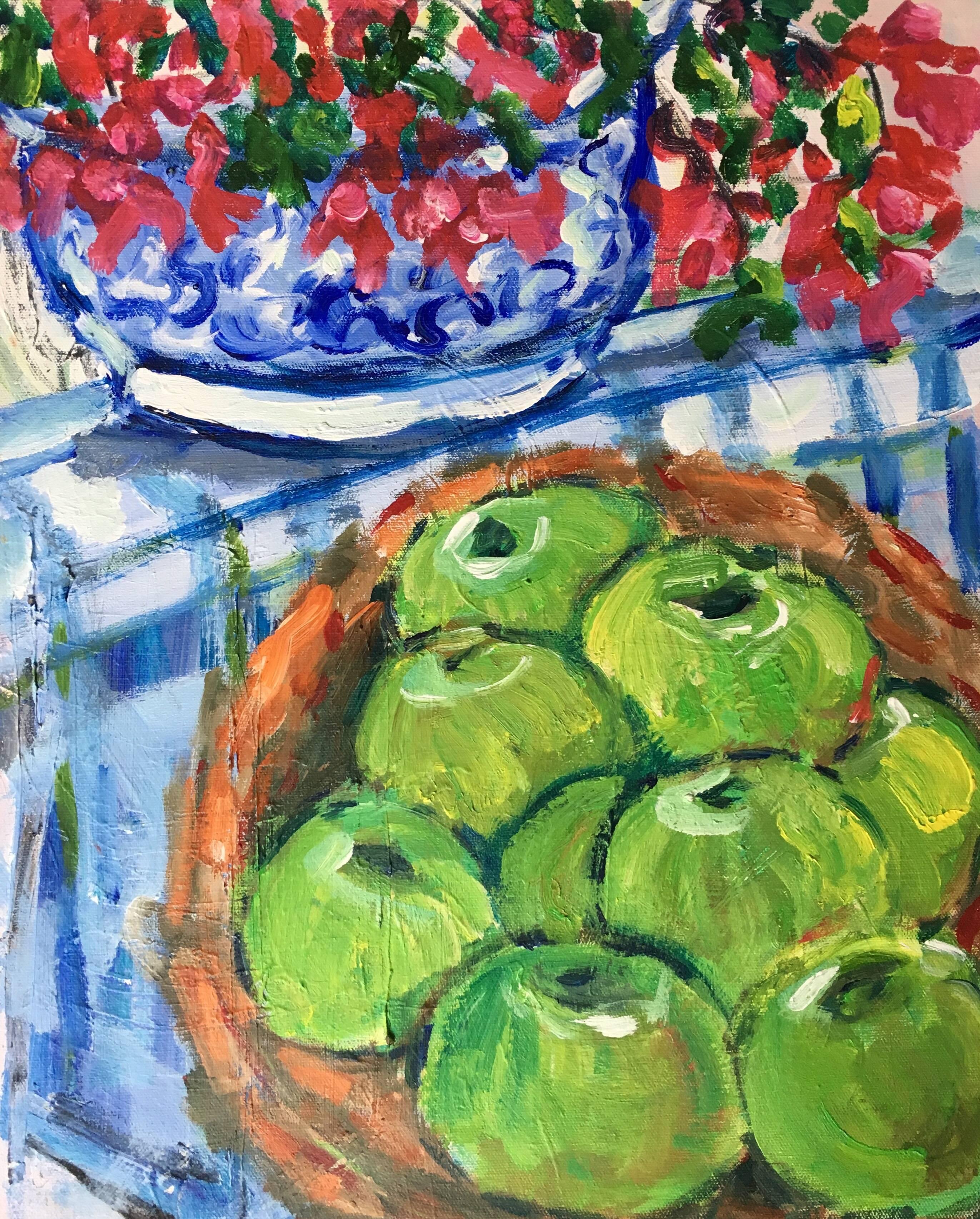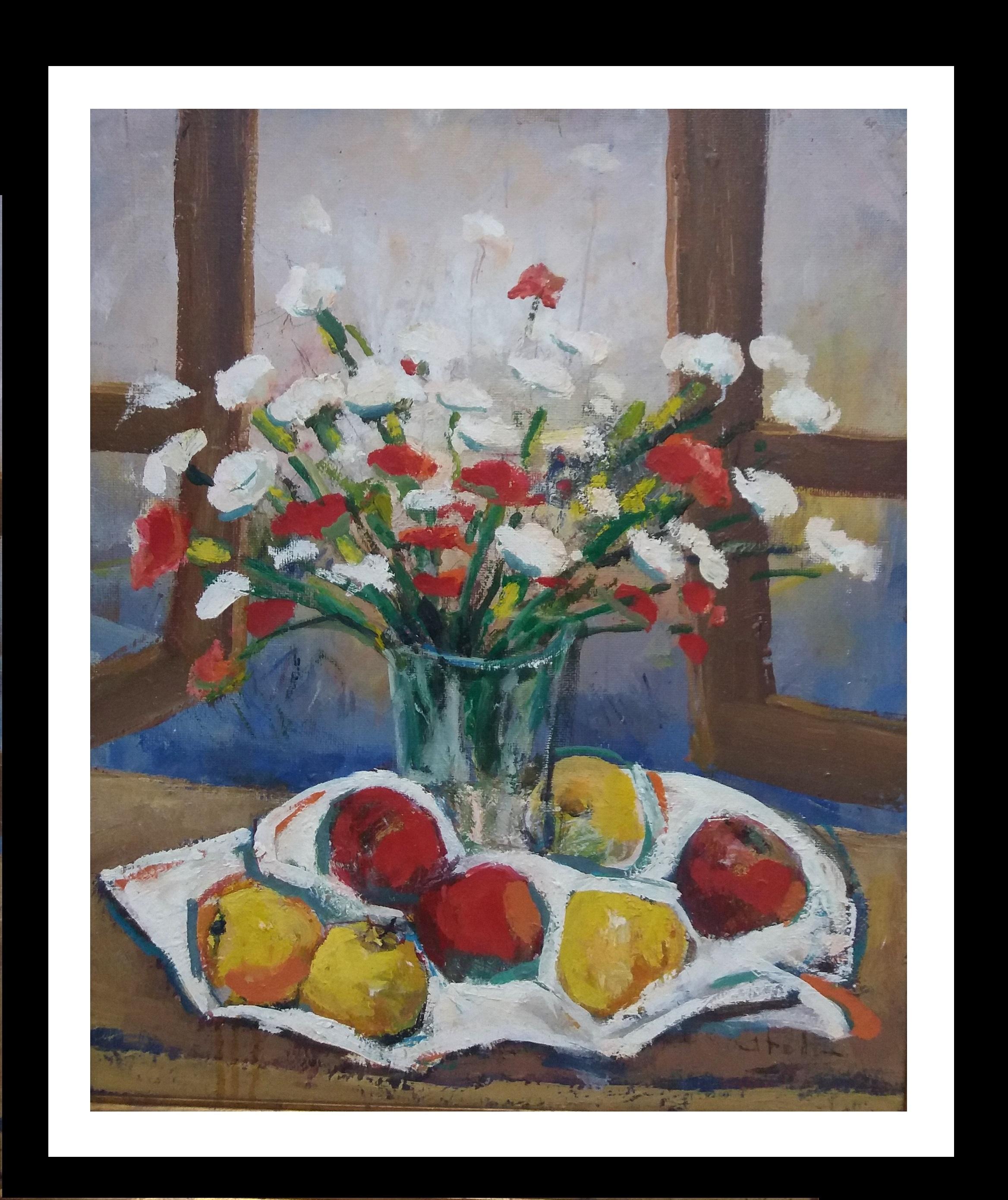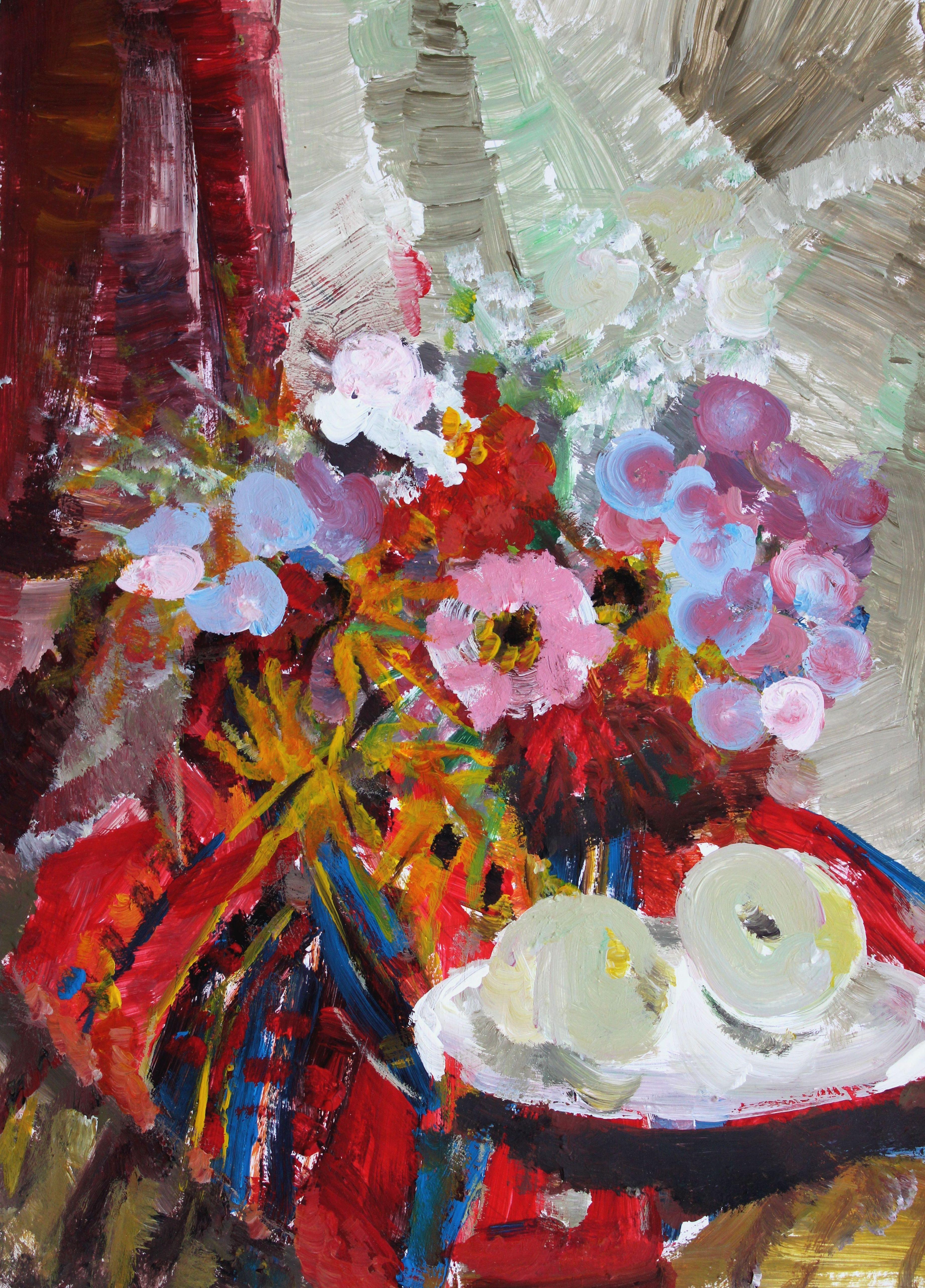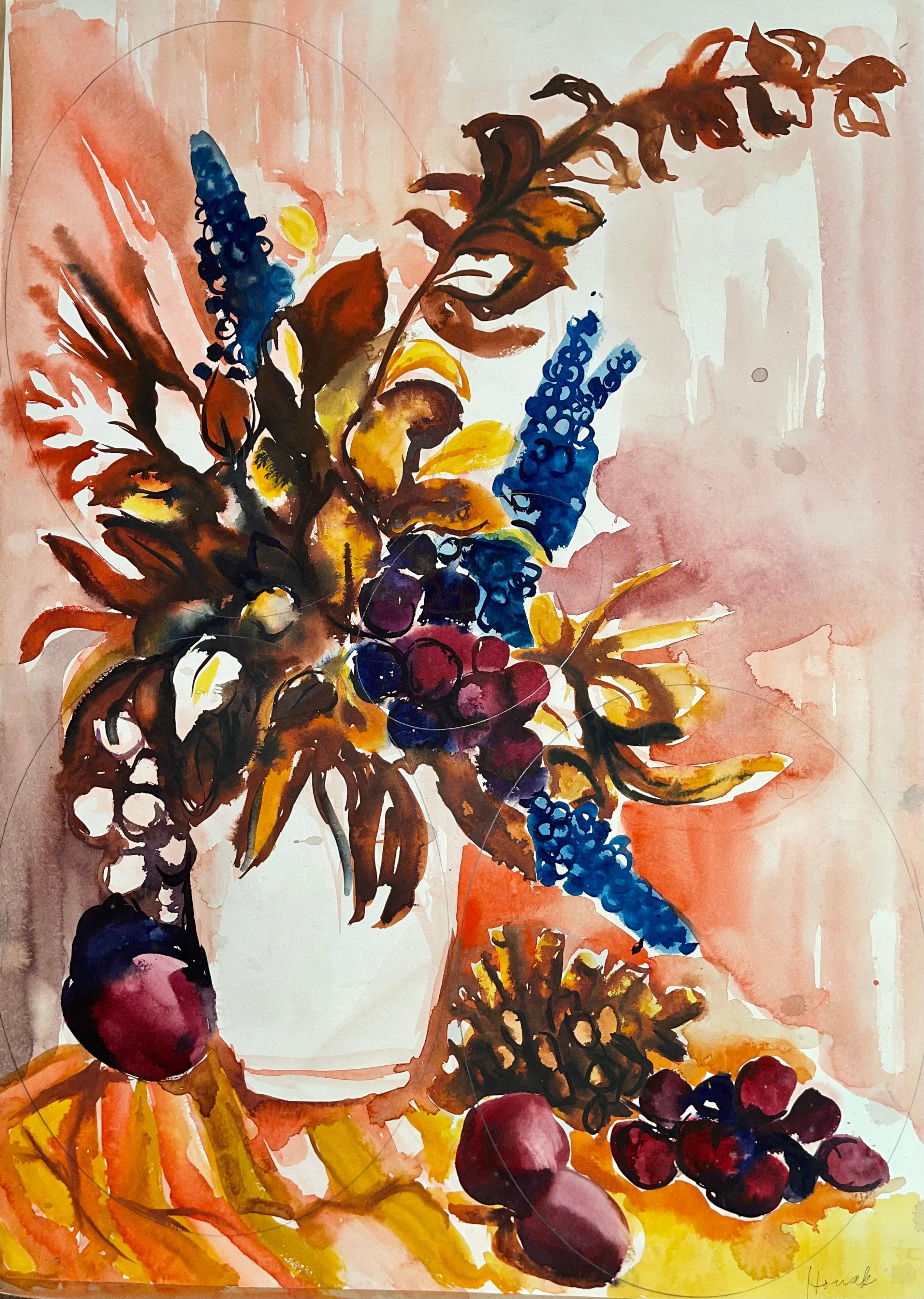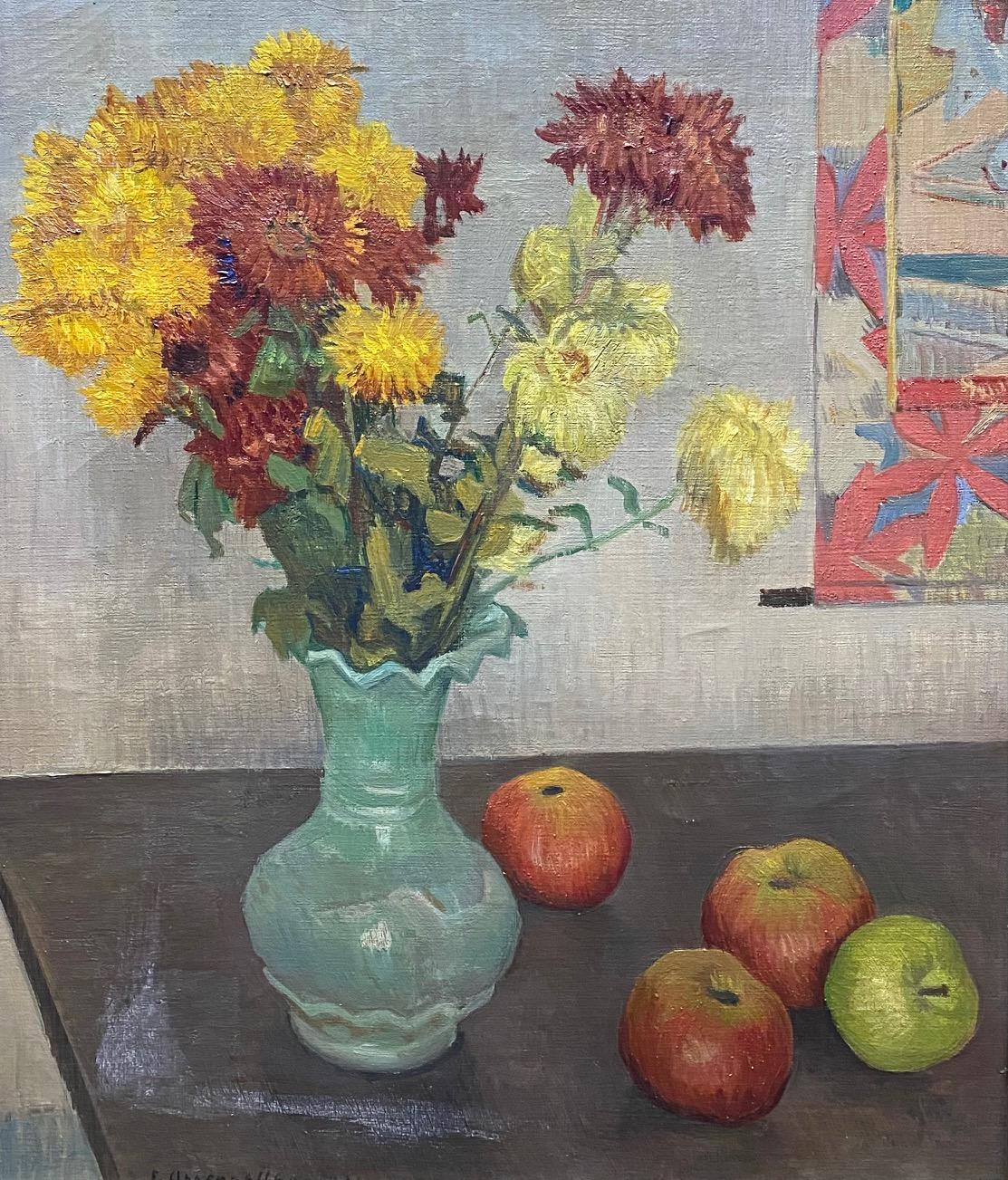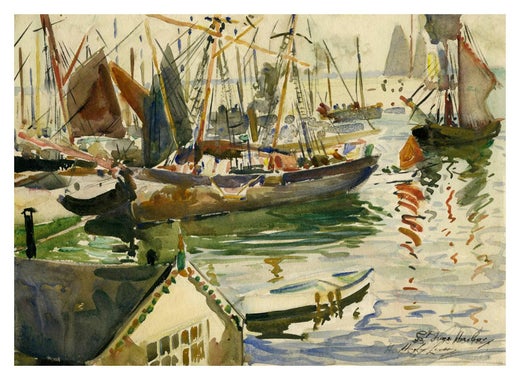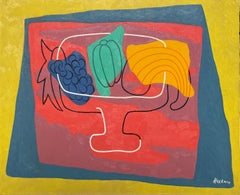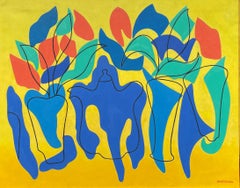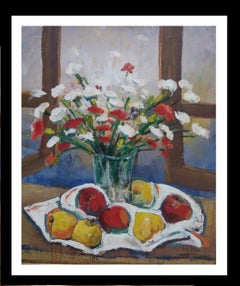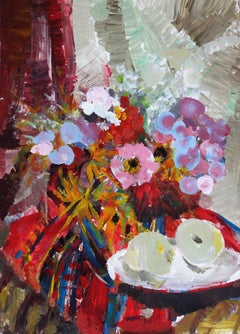Hayley Lever"Floral Still Life with Two Apples" Hayley Lever, Modernist Still Life PaintingEarly 20th Century
Early 20th Century
About the Item
- Creator:Hayley Lever (1876-1958, American)
- Creation Year:Early 20th Century
- Dimensions:Height: 26 in (66.04 cm)Width: 22 in (55.88 cm)
- More Editions & Sizes:Unique WorkPrice: $7,500
- Medium:
- Movement & Style:
- Period:
- Condition:
- Gallery Location:New York, NY
- Reference Number:1stDibs: LU1841215075072
Hayley Lever
Hayley Lever arrived in England at the turn of the century and worked and studied for a few years before settling down in the Cornwall village of St. Ives, a picturesque fishing port in southern England. He became an essential member of the artist's colony and produced an extensive body of work, predominantly fishing vessels, marines, seascapes, and port scenes. A prolific artist, Lever submitted his work to competitions in England, France, and even to America, receiving several prestigious awards. He also traveled to various countries in Europe, sketching wherever he went. Many of his most compelling works were done in the south of England and the port villages of Douarnenez and Concarneau in Brittany, directly across the English Channel from St. Ives. American artists occasionally visited St. Ives and Lever befriended Ernest Lawson, who greatly admired his work. Lawson persuaded Lever to emigrate to America, and he arrived in New York in 1912 with his family. Lever soon discovered the New England coast, where he began to paint the fishing fleets of Gloucester and the elegant yachts of Marblehead, producing scenes that became popular in the New York art market. Major galleries such as William Macbeth, Ferargil, and Daniel and Rehn gave him exhibitions, and he continued to gather awards including a gold medal at the Panama-Pacific International Exposition, San Francisco, in 1915. The National Arts Club honored him with a life membership, and he was elected as a member of the National Academy. From 1919–31, Lever taught life classes and still life painting at the Art Students' League of New York. He also maintained a summer studio in Gloucester in the 1920s from which he traveled to Nantucket, Martha's Vineyard, and the Canadian maritime provinces, producing many spectacular marines. Lever's paintings and watercolors are in numerous museum collections throughout the United States, Europe, and Australia, including the Metropolitan Museum in New York, the Phillips Memorial Gallery in Washington, DC, and the Sydney Art Gallery, in Australia.
- ShippingRetrieving quote...Shipping from: New York, NY
- Return Policy
More From This Seller
View AllEarly 20th Century Modern Still-life Paintings
Canvas, Oil
1930s Modern Still-life Paintings
Canvas, Oil
1950s Modern Interior Paintings
Canvas, Oil
1950s Abstract Figurative Paintings
Canvas, Oil
1880s Academic Figurative Paintings
Canvas, Oil
Late 20th Century Still-life Paintings
Canvas, Oil
You May Also Like
21st Century and Contemporary Impressionist Landscape Paintings
Oil
2010s Contemporary Still-life Paintings
Canvas, Oil
Late 20th Century Cubist Still-life Paintings
Wood, Oil
1990s Expressionist Still-life Paintings
Oil, Paper
1960s Impressionist Interior Paintings
Watercolor
1920s Academic Still-life Paintings
Oil
